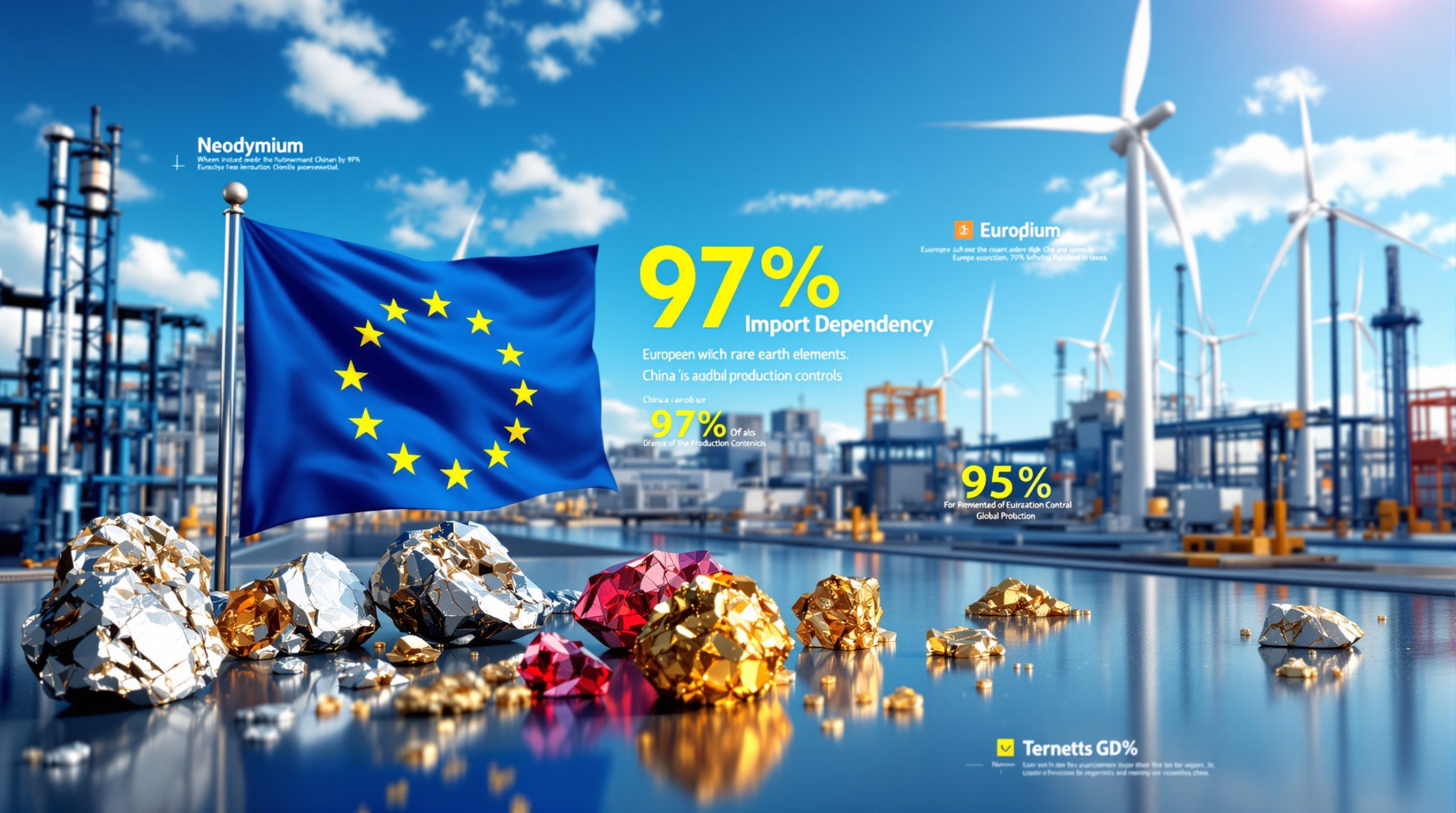The critical minerals partnership between Australia and the United States represents a fundamental departure from traditional resource extraction models, establishing unprecedented cooperation mechanisms designed to challenge concentrated supply chain dependencies. The Australia-US rare earth accord extends beyond conventional trade agreements, creating integrated investment structures that prioritise strategic independence over short-term cost optimisation. Furthermore, this strategic antimony financing approach demonstrates how allied nations are addressing critical material dependencies.
The comprehensive agreement establishes joint funding mechanisms targeting domestic mining and downstream processing operations, with both nations committing substantial resources toward building resilient supply networks for defence and civilian technology applications. Unlike previous resource partnerships, this framework explicitly addresses the entire value chain from extraction through final product manufacturing.
This strategic alignment reflects growing recognition that critical mineral supply chains have become instruments of geopolitical leverage, necessitating coordinated responses from allied nations to maintain technological and defence capabilities.
Investment Scale and Financial Commitments
Funding Structure and Timeline
The Australia-US rare earth accord establishes minimum investment commitments of $1 billion from each nation within a six-month implementation window, forming part of a broader $8.5 billion pipeline across multi-year development phases. This represents one of the largest bilateral resource security investments in recent history.
| Investment Component | Amount (USD) | Timeline | Purpose |
|---|---|---|---|
| Joint Minimum Commitment | $2 billion | 6 months | Priority project acceleration |
| Total Pipeline Value | $8.5 billion | Multi-year | Full supply chain development |
| Individual Nation Floor | $1 billion each | Initial phase | Domestic capability building |
Capital Deployment Mechanisms
The framework employs diverse financial instruments including direct equity participation, concessional lending arrangements, and strategic procurement guarantees. These mechanisms address the capital-intensive nature of rare earth processing facilities, which typically require 3-5 years from initial investment to commercial production.
Investment priorities target operations with demonstrated technical feasibility and strategic importance to allied supply chains, emphasising projects capable of delivering measurable production increases within realistic development timelines rather than speculative exploration ventures. This approach aligns with broader critical minerals strategy developments globally.
The financial structure acknowledges that rare earth processing demands sustained capital commitment through multiple development phases, from environmental permitting through facility construction and production ramp-up.
Targeted Critical Minerals and Strategic Materials
Comprehensive Mineral Scope
The Australia-US rare earth accord encompasses 31 strategic elements essential for modern technology and defence applications, spanning light and heavy rare earth elements, battery metals, and specialised industrial materials critical to advanced manufacturing. This comprehensive approach reflects the evolving mining industry evolution towards strategic material focus.
Priority Material Categories:
-
Light Rare Earth Elements: Cerium, lanthanum, neodymium for permanent magnets and catalysts
-
Heavy Rare Earth Elements: Dysprosium, terbium, yttrium for high-performance applications
-
Battery Critical Metals: Lithium, nickel, cobalt for energy storage systems
-
Defence Strategic Materials: Tungsten, gallium for military and aerospace applications
-
Semiconductor Inputs: Specialised elements for advanced chip manufacturing
Supply Chain Vulnerability Assessment
Current global production patterns reveal extreme concentration risks, with single-nation dominance across multiple processing stages creating systemic vulnerabilities for allied economies and defence capabilities. China currently controls approximately 70% of raw material extraction, 90% of separation and refining, and 85% of magnet manufacturing across rare earth supply chains.
This concentration extends beyond simple market share statistics, encompassing technical expertise, specialised equipment manufacturing, and established processing methodologies that require years to replicate elsewhere. The United States-Australia Framework addresses these vulnerabilities through coordinated action.
The mineral selection reflects strategic priorities identified through comprehensive supply chain risk assessments conducted by both Australian and US defence and technology agencies, emphasising materials with limited alternative sources and critical applications in defence systems.
Flagship Projects and Direct Funding Recipients
Gallium Recovery Initiative – Western Australia
Investment Specifications:
- Australian Commitment: $200 million concessional equity
- US Investment: Direct equity participation through strategic partnership
- Production Target: 10% of global gallium supply capacity
- Strategic Applications: Defence electronics and semiconductor manufacturing
This initiative demonstrates innovative approaches to critical mineral extraction by transforming aluminium refining byproducts into strategic materials, showcasing how existing industrial processes can be leveraged for enhanced resource security without requiring new mining operations.
The project represents a partnership between Australian aluminium processing capabilities and US strategic material requirements, creating integrated supply chains that reduce dependency on traditional gallium sources concentrated in Asia.
Nolans Rare Earth Development – Northern Territory
Project Parameters:
- Australian Investment: $100 million equity commitment
- Global Market Position: Targeting 5% of rare earth production capacity
- Development Status: Advanced environmental permitting phase
- Processing Model: Integrated mining and separation facility
The Nolans operation embodies Australia's strategic ambition to establish comprehensive downstream processing capabilities rather than continuing historical patterns of raw material export for overseas refinement. This integrated approach addresses the critical gap between Australian mining capabilities and value-added processing.
The project's significance extends beyond production capacity, demonstrating technical feasibility for establishing rare earth separation facilities outside traditional processing centres while meeting stringent environmental and operational standards.
Addressing Chinese Market Dominance
Current Concentration Analysis
| Processing Stage | China's Market Share | Strategic Risk Assessment |
|---|---|---|
| Raw Material Extraction | 70% | High vulnerability |
| Separation and Refining | 90% | Critical bottleneck |
| Magnet Manufacturing | 85% | Strategic dependency |
| Integrated Supply Control | Dominant | Systemic risk |
Strategic Diversification Approach
The partnership creates alternative supply pathways through coordinated allied investment in processing capabilities, reducing single-point-of-failure risks that have historically characterised critical mineral supply chains.
Key Diversification Elements:
- Allied Processing Networks: Establishing redundant processing capabilities across allied nations
- Technology Transfer Programs: Building domestic technical expertise in rare earth separation
- Strategic Reserve Development: Creating buffer supplies for critical defence and technology applications
- Joint Research Initiatives: Advancing next-generation extraction and processing technologies
The approach recognises that completely displacing Chinese processing capacity requires decade-long commitment and substantial technical development, focusing instead on creating sufficient alternative capacity to reduce coercive potential and supply disruption risks.
This strategy acknowledges Chinese technological and cost advantages while establishing strategic alternatives that provide supply security for critical applications without necessarily achieving complete supply chain independence.
Implementation Challenges and Constraints
Technical and Economic Barriers
Processing Complexity: Rare earth separation requires sophisticated chemical processes with extensive environmental management systems, creating barriers to rapid capacity expansion independent of available capital investment.
Capital Intensity: New rare earth processing facilities demand substantial upfront investment with extended payback periods, typically requiring $500 million to $2 billion for commercial-scale operations with 7-10 year development timelines from initial feasibility through commercial production.
Technical Expertise Gap: Specialised knowledge in rare earth processing remains concentrated in established production regions, necessitating comprehensive workforce development programmes and potential technology transfer arrangements.
Regulatory and Environmental Considerations
Permitting Complexity: Environmental approvals for rare earth processing operations typically require multi-year assessment periods, with complex waste management requirements for radioactive byproducts and chemical processing residues.
Community Engagement: Local opposition to mining and processing developments can create additional regulatory hurdles and project implementation delays, particularly in environmentally sensitive regions.
Waste Management Requirements: Rare earth processing generates radioactive and chemical byproducts requiring specialised long-term disposal solutions, adding complexity and cost to facility operations.
The transition from raw material export to integrated processing represents a fundamental shift requiring sustained political and financial commitment across multiple electoral cycles, with realistic timelines extending beyond immediate policy horizons.
Global Market Impact and Implications
Supply Chain Restructuring Effects
The Australia-US rare earth accord signals fundamental shifts toward regionalised supply networks, with allied nations prioritising supply security over pure cost optimisation in critical mineral sourcing decisions. This represents a departure from globalised supply chain models that have dominated resource industries for decades.
Price and Market Dynamics
Short-term Market Effects: Limited immediate price impact due to extended development timelines for new processing capacity
Medium-term Stabilisation: Potential price moderation through increased supply diversity and reduced market manipulation risks
Long-term Structural Changes: Enhanced price stability through strategic stockpiling and multiple supply source availability
Investment Landscape Transformation
Upstream Development Companies: Firms with advanced-stage projects in allied jurisdictions gain strategic premium valuations based on supply security value rather than purely economic returns
Processing Technology Providers: Equipment manufacturers and separation technology suppliers benefit from capacity expansion across allied nations
Infrastructure and Logistics: Transportation networks and specialised handling facilities supporting new supply chains attract strategic investment
The market transformation extends beyond traditional commodity pricing models, incorporating geopolitical risk premiums and supply security valuations that fundamentally alter investment decision-making processes.
Strategic Implications for Australia's Resource Sector
Value Chain Transformation
Australia's evolution from raw material exporter toward integrated processing capabilities represents a structural shift capturing higher-value manufacturing stages within domestic operations, potentially transforming the nation's position in global resource markets. This aligns with Australia's broader strategic minerals reserve development initiatives.
Strategic Positioning Advantages:
-
Geological Endowment: World-class mineral deposits across multiple critical elements providing long-term supply security
-
Political Stability: Secure investment environment for long-term project development with consistent regulatory frameworks
-
Allied Market Access: Preferential access to US and allied nation markets through strategic partnership agreements
-
Technical Infrastructure: Established mining sector capabilities with potential for processing technology integration
Regulatory Framework Evolution
The accord includes commitments to streamline permitting processes and reduce regulatory barriers that have historically constrained Australian processing project development, potentially accelerating project timelines and reducing development costs.
These regulatory reforms target specific bottlenecks in environmental assessment processes while maintaining environmental protection standards, creating more predictable development pathways for strategic projects.
Development Timeline and Realistic Expectations
Implementation Phases
| Development Phase | Timeline | Expected Outcomes |
|---|---|---|
| Funding Allocation | 6-12 months | Project selection and capital commitment |
| Environmental Approval | 1-3 years | Permitting completion and construction commencement |
| Facility Construction | 2-4 years | Processing plant development and equipment installation |
| Production Ramp-up | 1-2 years | Commercial operations and capacity optimisation |
| Full Capacity Achievement | 5-8 years | Target production levels and market integration |
Realistic Market Impact Expectations
2025-2027: Project development activities and construction commencement for first-wave initiatives
2027-2030: Initial commercial production from flagship projects with gradual capacity increases
2030-2035: Meaningful contribution to global supply diversity with established alternative supply chains
The extended timeline reflects the capital-intensive nature of rare earth processing operations, requiring sustained commitment through multiple political cycles and economic conditions to achieve strategic objectives.
Important Consideration: Investors and policymakers should calibrate expectations against realistic development timelines, recognising that meaningful supply chain diversification requires decade-long commitment rather than immediate market transformation.
Long-term Strategic Vision and Geopolitical Implications
Allied Resource Security Framework
The Australia-US rare earth accord establishes precedent for coordinated resource security strategies among democratic allies, potentially expanding to include additional nations and mineral categories as strategic competition intensifies. The focus on energy transition minerals demonstrates the broader implications of this partnership.
Broader Geopolitical Considerations
Supply Leverage Reduction: Decreases potential for resource-based economic coercion by diversifying critical supply sources across allied nations
Defence Technology Access: Ensures continued material availability for advanced defence systems and strategic technology development
Economic Security Enhancement: Protects critical industries from supply disruptions that could compromise national economic competitiveness
What Does This Mean for Future Expansion?
The framework provides foundation for broader critical minerals cooperation, potentially encompassing additional allied nations and expanding to other strategic materials beyond rare earths as geopolitical competition drives further supply chain regionalisation. The critical minerals framework represents a significant shift in allied cooperation strategies.
This strategic vision extends beyond immediate rare earth supply concerns, establishing institutional mechanisms for coordinated resource security that could address future supply vulnerabilities across multiple material categories essential for technological and defence capabilities.
The accord represents initial steps toward comprehensive critical mineral independence, requiring sustained investment and policy coordination to achieve meaningful supply chain diversification that reduces strategic vulnerabilities while maintaining technological advancement capabilities.
Ready to Position Yourself Ahead of Critical Minerals Developments?
Discovery Alert's proprietary Discovery IQ model delivers real-time alerts on significant ASX mineral discoveries, instantly empowering subscribers to identify actionable opportunities in the rapidly evolving critical minerals sector. With strategic partnerships like the Australia-US rare earth accord driving unprecedented investment into domestic capabilities, Discovery Alert's comprehensive discoveries tracking ensures you won't miss the next major development that could generate substantial returns.




